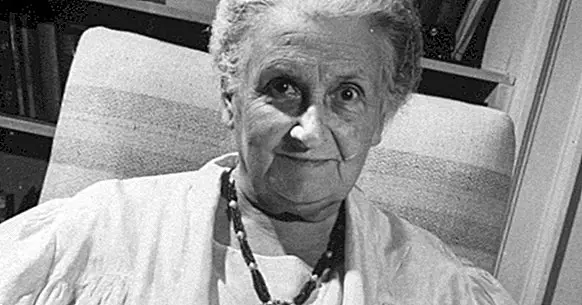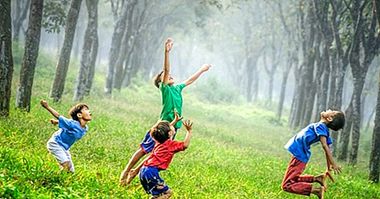Montessori method: its 8 educational principles
The Montessori educational method, which was developed in the early twentieth century for use in children and preadolescents, has been popularized and extended to a large extent since its emergence.
In this article we will describe the 8 fundamental principles of the Montessori method , among which we can highlight the prepared environment and self-education.
- Maybe you're interested: "The 9 best masters in education"
What is the Montessori method?
Maria Montessori (1870-1952) was an Italian physician and educator whose work, mainly focused on the philosophy of education and pedagogy, constitutes an antecedent to constructivism and continues to have a strong influence today.
The educational method proposed by Montessori emphasizes the need to favor the natural development of students' aptitudes through self-direction, exploration, discovery, practice, collaboration, play, deep concentration, imagination or communication.
This pedagogical philosophy moves sharply away from traditional educational methods since is based on spontaneity and the choice of students instead of rigid systems and based on the fulfillment of certain criteria of academic evaluation. For Montessori, the respect and promotion of the independence of the child is key.
In turn, the Montessori proposal is considered a theoretical model of human development. In this sense, we must frame the principles of the following section in the core postulates of his theory: people we build ourselves psychologically through interaction with the environment , and we have an innate tendency to personal development.
- Maybe you're interested: "Waldorf Pedagogy: its educational keys and philosophical foundations"
Fundamental educational principles
Although the Montessori method has been applied in different ways because of its popularity, it is possible to find at least 8 fundamental principles of this pedagogical style based on the work of the Montessori itself and later popular developments.
1. Learning by discovery
The educational philosophy of Montessori has a markedly constructivist character. It is understood that people in general we learn better through direct contact, practice and discovery than through direct instruction. However, certain subjects, especially from the age of 6, require specific master classes.
2. Preparation of the educational environment
In the Montessori method a "prepared environment" is used; this means that it is intended to be adapted to the needs of the students according to their age. It must also encourage movement and the realization of activities, be clean and orderly, be aesthetically attractive and have natural elements such as plants inside and outside the classroom .
- Maybe you're interested: "The differences between a psychologist and an educational psychologist"
3. Use of specific materials
One of the most important components of the Monte Montessori environment is the inclusion of certain materials that were developed by Montessori herself and her collaborators. It is preferable to use natural materials, such as wood, than other, more artificial ones.
4. Student's personal choice
Although the prepared environment entails limitations in the range of activities that students can access, it is still greater than that of traditional education and during most of the class time you are free to choose any material, game or educational content among those available in the classroom.
Montessori spoke of "self-education" to refer to the active participation of students in their own learning. In this sense, the role of teachers is related more to preparation, supervision and help, as we will see later.
5. Classrooms for age groups
A very important aspect of the Montessori method is the fact that it is recommended that the classrooms contain a high number of students and that they have different ages, although they are divided by age groups because of the specificities of development in each period. Generally the separation is carried out in groups of 3 years (for example from 6 to 9).
This is because Montessori argued that there are sensitive periods in which children have a greater facility to acquire some or other types of skills and knowledge. Thus, in early childhood it is important to develop language or the senses, while abstract thinking is encouraged especially after age 6.
6. Collaborative learning and play
Since students are free to choose how they are educated, they will very often decide to collaborate with their peers. This allows peer tutoring , is especially relevant in relation to the game (which fulfills important functions in sociocultural development) and must be promoted by the teaching staff.
- Related article: "30 interesting games to learn to read"
7. Classes without interruptions
Another of the most characteristic features of the Montessori method is the presence of classes of 3 hours uninterrupted. Since they are based mainly on self-direction on the part of students, they should be much less bored than in traditional teaching; what is sought is to favor the achievement of a state of concentration that enhances learning.
8. Teacher as a guide and supervisor
In the Montessori method the teacher guides the learning of the students avoiding hindering their process of self-education . Thus, their roles are related to the preparation of the academic environment, the observation of children to promote individualized learning, the introduction of new educational materials or the provision of information.



















